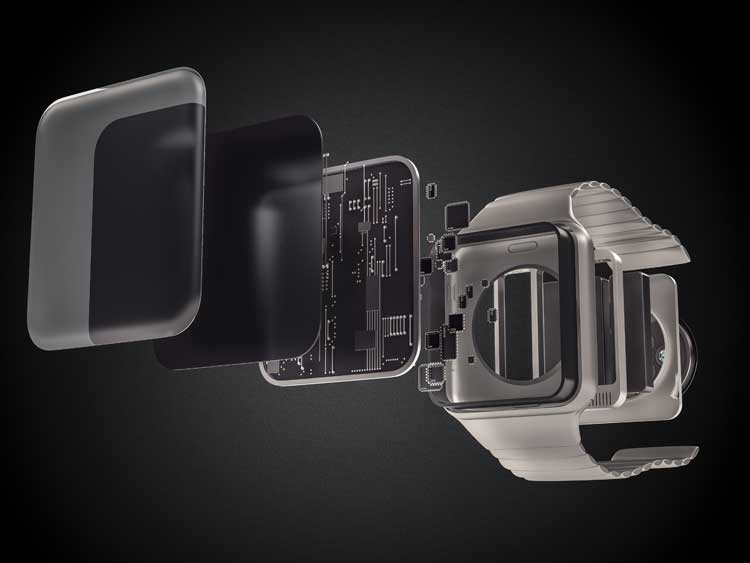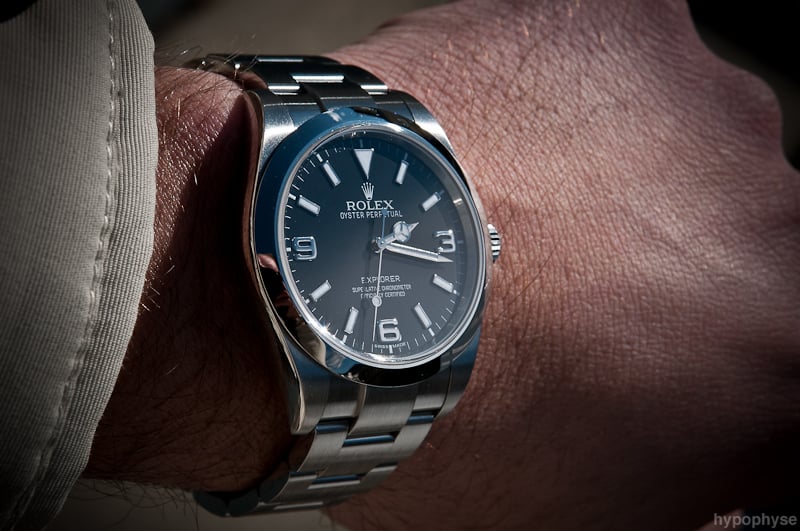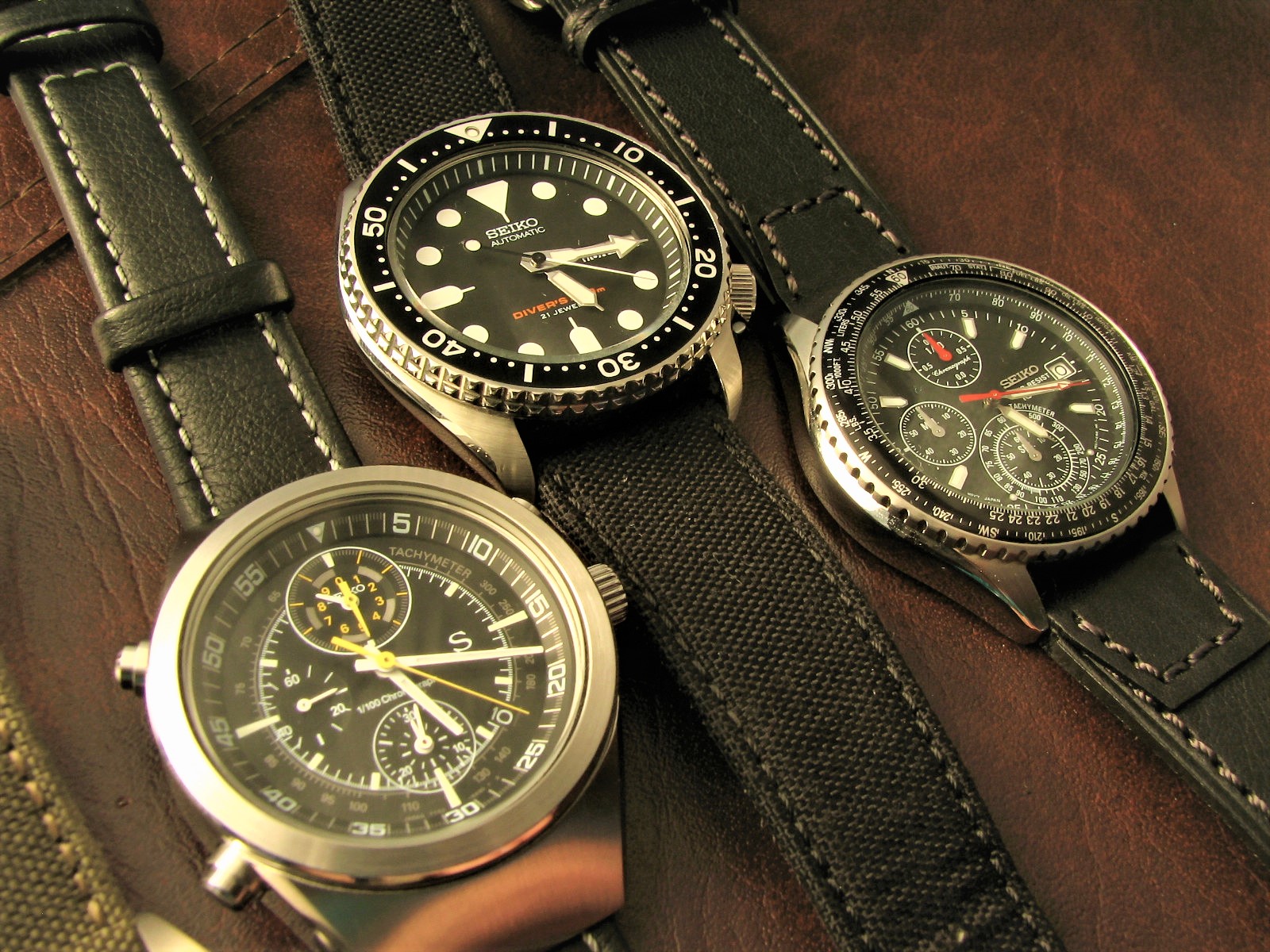Technology keeps getting smarter. We have smartphones, of course, and smart cars. There are also smart houses, smart TVs, and smart refrigerators, just to name some of the new sophisticated tech that is taking over every part of our lives. A generation after “For Dummies” books aimed to simplify everything for the common person, our technology is now doing all the thinking for us.
One of the hottest items in the growing “smart” trend is the smartwatch. Sleek, compact, and wearable, smartwatches are an obvious next step in the evolution of technology, but also a window into a future where interconnected technology is everywhere at all times. Yet, unlike the all but forgotten Google Glasses, smartwatches don’t feel eerily intrusive.
So, what exactly can a smartwatch do, and what can we expect from the future of smartwatches?
Table of Contents
The evolution of smartwatches
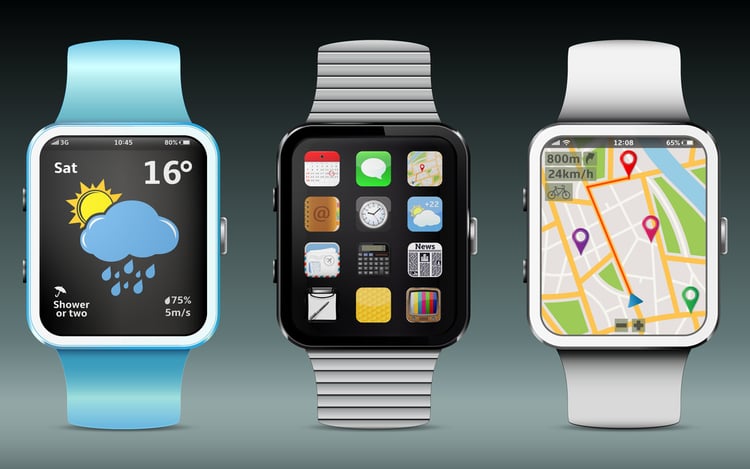 The modern smartwatch feels like a product of existential necessity like the wristwatch realized it was becoming obsolete and actively decided to evolve to fight off obsolescence. After all, with the total societal takeover of smartphones, the wristwatch’s main function – telling time – was no longer strictly needed.
The modern smartwatch feels like a product of existential necessity like the wristwatch realized it was becoming obsolete and actively decided to evolve to fight off obsolescence. After all, with the total societal takeover of smartphones, the wristwatch’s main function – telling time – was no longer strictly needed.
In reality, the smartwatch was always going to be the next step in watch evolution, and the roots of the technology stretch further back than you probably realize. Tech-heavy fiction ranging from James Bond to Star Trek has long featured wristwatch-like devices that function in unusual, helpful ways, but in the real world, multi-function wristwatches have traveled a rocky road to reach the stylish moment they’re now in.
Starting in the 1920s and progressing into the 21st century, watchmakers have experimented with stuffing extra features into watches, including analog maps, mini-TVs and radios, a memo-taker (requiring an attachable keyboard), and, yes, even caller ID. Some features, like calculators, became fun novelties but hardly standard.
Many of these features were ahead of their time, while others just weren’t all that practical. Every attempt at a multifunction watch, though, was a necessary (more or less) stage in the evolution of the smartwatch.
The first smartwatches
In 2012, Sony was the first company to release what would be recognized as a modern smartwatch. The name for their line of wearable computers was, appropriately, SmartWatch. The watch was officially released in March and worked in conjunction with the Xperia smartphone, running on an Android OS. Its early appearance in the market gave it rights to using the generic product name as the actual brand name, but Sony’s new watch only made slight initial ripples.
The first big wave for smartwatch technology came as a result of an unknown company raising money on Kickstarter. The makers of the Pebble watch raised over $10 million from April to May of 2012, making it the most successful crowdsourcing campaign up to that time and a genuine populist phenomenon.
The creators took suggestions from the backers to help decide which features and apps would be included and the first Pebble smartwatch was released in January of 2013.
Another, more modest Kickstarter campaign helped launch the first truly standalone smartwatch. The Omate TrueSmart was the first watch that didn’t need to connect to a smartphone for any features and could, in fact, be used to make phone calls. It had GPS and was capable of using Android apps.
Combined, these three watches helped establish the smartwatch as so much more than just some nerdy tech toy; by 2013, the smartwatch was becoming essential technology.
What makes a watch “smart”?
 As has been established, what we now call a smartwatch has had many antecedents. Much like the evolution of an animal species, it can be hard to pinpoint a definitive point when tech-equipped watches officially became smartwatches. Still, now that they do exist, we can at least discuss the common features of all modern smartwatches.
As has been established, what we now call a smartwatch has had many antecedents. Much like the evolution of an animal species, it can be hard to pinpoint a definitive point when tech-equipped watches officially became smartwatches. Still, now that they do exist, we can at least discuss the common features of all modern smartwatches.
Smartwatches are, first and foremost, digital watches (as opposed to analog). Far more than a digital display, though, these watches can run the kind of apps that are found on smartphones. They are also capable of playing digital media (like music and video).
Nowadays, almost all smartwatches have a touchscreen for an easy user interface. These are the essential qualities of a smartwatch.
The biggest differentiation between types of smartwatches is whether or not the watch is standalone (like the Omate TrueSmart), having its own internet connection, or is designed to link with another, internet-enabled device, most commonly a smartphone. Major smartphone manufacturers like Samsung and Apple have designed smartwatches to specifically interact with their phones.
What other features do smartwatches have?
Beyond those basics, smartwatches offer a variety of features and have a spectrum of abilities. Some smartwatches have exercise and health features that include measuring heart rates, the number of steps, sleep patterns, and much more.
Others include GPS and navigation instruments, wind and metrological tools, and much more.
The most highly equipped smartwatches can do essentially everything that a smartphone can do, including receiving audio and text messages, allowing phone calls, and receiving emails.
Do smartwatches have cameras?
One of the most popular features of smartphones – and arguably the reason they have become so omnipresent in our lives – is the camera. This feature is truly what separates smartphones from smartwatches.
While the now-discontinued Samsung Gear 2 did take low-quality, 2-megapixel photos (by comparison, the Samsung Galaxy S8 smartphone takes 12-megapixel photos), the best smartwatches on the market right now from the likes of Samsung, Apple, Garmin, and Fitbit, you’ll notice that none of them have a built-in camera.
Manufacturers are constantly trying to make smartwatches slimmer and lighter, and a camera just adds too much bulk, however, there are a few good smartwatches with cameras on the market.

Samsung seems to have abandoned the camera altogether on their smartwatches, as the latest model, the Samsung Galaxy Watch doesn’t have one.
Samsung’s chief competitor, Apple, doesn’t include a camera in their smartwatch either, suggesting that the technology hasn’t gotten advanced enough for the manufacturers to think it is worth the effort.
One feature that makes up for a lack of a camera on these watches is the ability to activate your smartphone’s camera from your watch. This allows a person to set the phone in one location and take a picture while standing in a different location. That’s a helpful feature that might help bring on the end of that terrible scourge, the Selfie Stick.
If the lack of a camera is a deal-breaker for you, there is at least one smartwatch with a quality camera: the crowdfunded Arrow Smartwatch. This fully-funded watch is still in production but promises to have a 360° rotatable 1080P HD camera. Whether the watchmakers can deliver on this promise is yet to be seen, but it seems inevitable with the way technology progresses that high-quality, miniature watch cameras aren’t far off.
How far apart can a smartwatch and smartphone be?
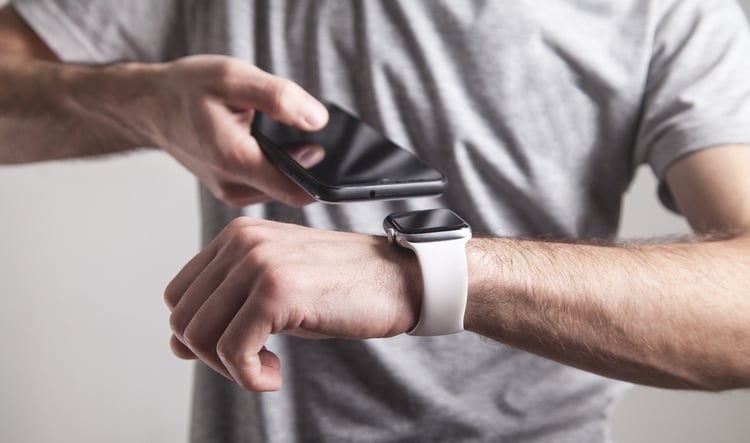
One of the initial problems with smartwatches that linked to smartphones was the need for proximity. Many of the original smartwatches are connected to a phone via Bluetooth, which has a limited range. Even today, the best Bluetooth range is 100 meters. That means that for all intents and purposes, wherever your watch went, your phone had to follow.
In 2015, though, Google released their line of smartwatches, Android Wear, that connected to a phone via Wi-Fi. This advancement meant that as long as the phone is turned on and connected, the linked watch can go anywhere and maintain an internet connection. No distance is too far apart (for those smartwatches that have adopted this tech, at least).
Do smartwatches use SIM cards?
Smartphones are so ubiquitous that pretty much everyone has heard of a SIM card by now. The SIM card is what allows your phone to connect to a cellular network. Among other things, each individual user’s phone number is stored on the SIM card and you won’t find very many (if any) modern smartphones that work without one.
Most smartwatches do not need SIM cards because they either lack phone functionality, or they pair with a smartphone and piggyback off of that data plan. On the other hand, the standalone watches we have already discussed don’t need to link with a smartphone to use a SIM card.
For instance, the Scinex SW20 is a very affordable smartwatch that can make and receive calls (it even comes with a camera). Capable of holding up to 32GB of memory, this smartwatch is truly self-sufficient, but it can link with an Android or IOS phone if so desired. Fair warning with this watch, it has greater functionality with Android-based phones.
Should I replace my smartphone with a smartwatch?
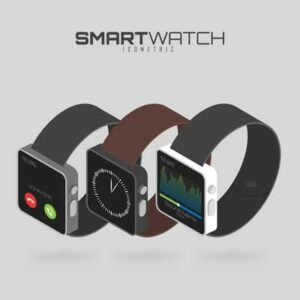
Considering the vast functionality of many smartwatches, it might seem strange that anyone would still buy a smartphone. After all, it would be much easier to wear an all-in-one watch around your wrist instead of carrying a bulky phone in your pocket. The risk of leaving it in a cab or breaking the fragile glass would be minimized.
In fact, though, there are disadvantages to smartwatches, at least in their current stage of evolution.
As previously discussed, most smartwatches require a connection to a smartphone (or some other web-connected device) to perform most of the important tasks. At best, that makes these gadgets an accessory to your phone, and not many people want to pay extra money for a device that is nothing more than a companion to their already expensive smartphone.
Another issue is that smartwatch batteries tend to not last long and need to be charged frequently. Some smartphones also suffer from this issue, of course, but if you’re buying a smartwatch for its health or sleep tracker functions, having to remove it to charge defeats that purpose.
Plus, if you wear a watch for its timekeeping capabilities (a novel idea), it’s not ideal that the watch dies frequently.
Furthermore, watch faces are obviously much smaller than phones. While some people dislike the way smartphones are getting larger, the reality is that bigger screens are quite nice, especially if you’re someone who likes to watch videos or take photographs. The smartwatch interface is necessarily small and doesn’t have much room to grow.
One of the factors that are probably limiting the popularity of smartwatches is the price. In the few years that smartwatches have been on the market, the average price has gone down, but the cost can still be fairly prohibitive, especially if, again, the watch is intended as a companion piece to an already expensive smartphone.
It’s possible to find a reasonably priced watch like the $80 Huami Amazfit Bip that offers you essential health tracking features. It’s also possible to find completely unreasonably priced smartwatches, like the $197,000, diamond-encrusted Connected Modular smartwatch by TAG Heuer. Most smartwatches are far closer to the Huami end of the range than the TAG Heuer, but the higher quality watches can still cost thousands of dollars.
Just like a normal watch, you tend to get what you pay for when buying a smartwatch. Some products that are marketed as smartwatches are nothing more than knock-off Fitbits with a clock. On the other hand, unlike traditional watches, smartwatches do tend to drop in price with the release of each new iteration (like smartphones), so if having the absolute newest tech isn’t a priority, a quality smartwatch can be found in the low hundreds.
Which smartwatch should I buy?
Like any phone or watch, buying a smartwatch comes down to numerous factors, including what you need it for, what you are willing to spend, and whether or not it will be compatible with your lifestyle and personal tech.
Like the smartphone market, the smartwatch market has been largely dominated by big tech corporations, including Samsung, Apple, Google, and Sony. If you have a preference for any of their phones, you will probably find their watches fit your style and need just as well.
If you are looking to expand your search, though, consider the Ticwatch, from Mobvoi, a Chinese tech company focused on artificial intelligence.
The Ticwatch Pro is the flagship watch in the line. It has one of the smartwatches with the longest-lasting batteries in the industry (it can last up to 30 days) uses Google’s Wear OS (one of several smartwatch operating systems currently being used) and can utilize thousands of Google apps. It also has health and fitness trackers and uses speech recognition to act as a personal assistant. Retailing at $250, this is one of the nicest looking and most fully equipped smartwatches on the market.
As with all personal accessories, one size never fits all. Luckily, there are as many smartwatch options as there are for smartphones, and it’s clear that technology is only going to keep growing and evolving. A smartwatch may be a luxury now, but odds are good that in the next few years, they’ll become as necessary as a smartphone.

